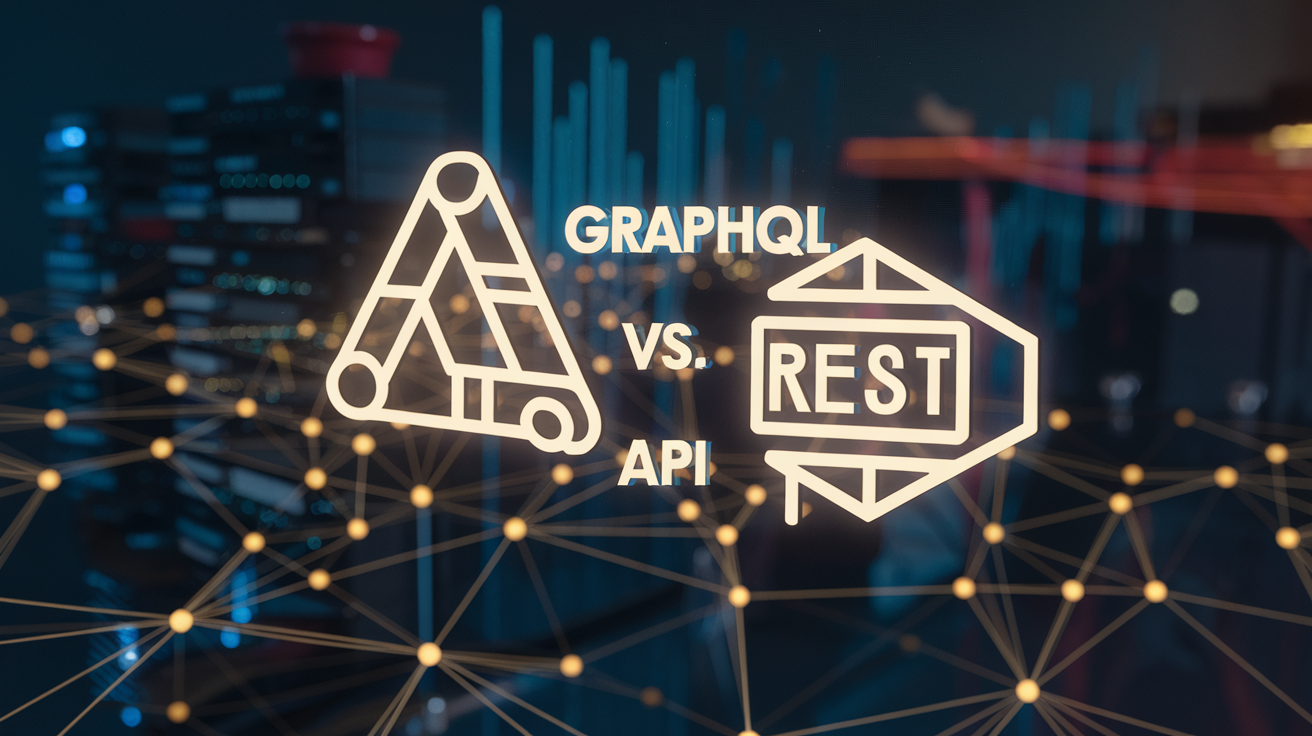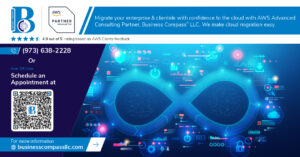🔍 Are you grappling with the complexities of microservices communication? You’re not alone. In today’s rapidly evolving tech landscape, choosing between REST and gRPC for your system design can feel like navigating a maze blindfolded. But fear not! We’re here to shed light on this crucial decision.
Imagine building a state-of-the-art microservices architecture, only to have it crumble due to inefficient communication protocols. The consequences can be dire: sluggish performance, scalability nightmares, and maintenance headaches that keep developers up at night. But what if you could sidestep these pitfalls and create a robust, efficient system that stands the test of time?
In this ultimate guide, we’ll demystify REST and gRPC, two titans of microservices communication. We’ll dive deep into their strengths, weaknesses, and ideal use cases. Whether you’re a seasoned architect or a curious developer, by the end of this post, you’ll have the knowledge to make an informed decision that could revolutionize your system design. So, buckle up as we embark on this enlightening journey through the world of microservices communication! 🚀
Understanding Microservices Communication
Importance of efficient inter-service communication
Efficient inter-service communication is crucial for the success of microservices architectures. It directly impacts system performance, scalability, and overall user experience. Here’s why it matters:
- Reduced latency: Efficient communication minimizes delays between services, ensuring faster response times.
- Improved scalability: Well-designed communication protocols allow for easier scaling of individual services.
- Enhanced reliability: Robust communication methods prevent data loss and ensure consistent service interactions.
- Lower resource consumption: Efficient protocols reduce network bandwidth and processing power requirements.
| Aspect | Impact of Efficient Communication |
|---|---|
| Performance | Faster response times, reduced latency |
| Scalability | Easier to scale individual services |
| Reliability | Fewer errors, consistent interactions |
| Resource Usage | Lower bandwidth and processing needs |
Key considerations for choosing a communication protocol
When selecting a communication protocol for your microservices, consider the following factors:
- Data format: Choose between human-readable (e.g., JSON) or binary formats based on your needs.
- Latency requirements: Assess the acceptable delay for your specific use case.
- Payload size: Consider the amount of data typically exchanged between services.
- Language support: Ensure compatibility with your tech stack and programming languages.
- Learning curve: Evaluate the ease of implementation and developer familiarity.
Impact on system design and performance
The choice of communication protocol significantly influences system design and performance:
- Architecture flexibility: Some protocols may impose constraints on your overall system architecture.
- Load balancing: Different protocols offer varying levels of support for load balancing strategies.
- Caching: The protocol choice affects caching mechanisms and efficiency.
- Monitoring and debugging: Certain protocols provide better tooling for observability and troubleshooting.
Ultimately, the right communication protocol aligns with your specific requirements, balancing performance, scalability, and ease of development. As we explore REST and gRPC in the following sections, keep these considerations in mind to make an informed decision for your microservices architecture.
REST (Representational State Transfer) Explained
Core principles of REST architecture
REST (Representational State Transfer) is built on several key principles that guide its implementation in microservices:
- Stateless communication
- Client-server architecture
- Uniform interface
- Cacheable responses
- Layered system
Here’s a breakdown of these principles:
| Principle | Description |
|---|---|
| Stateless communication | Each request contains all necessary information, no client context stored on server |
| Client-server architecture | Separation of concerns between client and server |
| Uniform interface | Consistent resource identification and manipulation through URIs |
| Cacheable responses | Responses can be labeled as cacheable or non-cacheable |
| Layered system | Client can’t tell if it’s connected directly to the end server or an intermediary |
Advantages of using REST in microservices
REST offers several benefits for microservices communication:
- Simplicity and ease of implementation
- Scalability due to stateless nature
- Platform and language independence
- Wide adoption and extensive tooling support
- Excellent performance for read-heavy workloads
Common REST implementation challenges
While REST is widely used, it does come with some challenges:
- Versioning APIs
- Handling complex queries efficiently
- Maintaining consistency across multiple services
- Dealing with over-fetching or under-fetching of data
- Managing authentication and authorization
Best practices for RESTful API design
To maximize the benefits of REST in your microservices:
- Use meaningful and consistent resource naming conventions
- Implement proper HTTP method usage (GET, POST, PUT, DELETE)
- Provide clear and comprehensive API documentation
- Implement robust error handling and status codes
- Design with scalability in mind, considering pagination and filtering
Now that we’ve explored REST in detail, let’s move on to understanding gRPC and how it compares to REST in microservices communication.
gRPC (gRPC Remote Procedure Call) Demystified
Fundamentals of gRPC protocol
gRPC is a high-performance, open-source framework developed by Google for efficient and fast inter-service communication. It uses Protocol Buffers as its interface definition language and HTTP/2 as its underlying transport protocol.
Key components of gRPC:
- Protocol Buffers (protobuf): A language-agnostic data serialization format
- HTTP/2: Enables multiplexing, header compression, and bidirectional streaming
- Service definitions: Describe methods that can be called remotely with their parameters and return types
Benefits of gRPC for microservices communication
gRPC offers several advantages for microservices architecture:
- Performance: Highly efficient due to binary serialization and HTTP/2
- Strong typing: Ensures data consistency across services
- Bi-directional streaming: Supports real-time communication
- Language-agnostic: Works with multiple programming languages
- Code generation: Automatically generates client and server code
| Feature | Benefit |
|---|---|
| Binary serialization | Faster data transfer |
| HTTP/2 | Improved latency and resource utilization |
| Strong typing | Reduced errors and improved reliability |
| Bi-directional streaming | Real-time updates and efficient communication |
| Code generation | Faster development and reduced boilerplate code |
Potential drawbacks and limitations
While gRPC offers many benefits, it also has some limitations:
- Limited browser support: Not natively supported in web browsers
- Steeper learning curve: Requires understanding of Protocol Buffers and gRPC concepts
- Less human-readable: Binary format makes debugging more challenging
- Firewall traversal: May face issues with certain firewalls and proxies
gRPC implementation strategies
To effectively implement gRPC in your microservices architecture:
- Define services and message types in .proto files
- Generate client and server code using the gRPC toolchain
- Implement server-side logic and client-side calls
- Consider using gRPC gateway for REST compatibility
- Implement proper error handling and timeout mechanisms
Now that we’ve explored gRPC in detail, let’s compare it with REST to understand their relative strengths and use cases.
REST vs gRPC: A Comprehensive Comparison
Performance and scalability
When comparing REST and gRPC, performance and scalability are crucial factors to consider. gRPC generally outperforms REST in terms of speed and efficiency, especially in high-throughput scenarios. This is primarily due to gRPC’s use of Protocol Buffers for serialization and HTTP/2 for transport.
| Feature | REST | gRPC |
|---|---|---|
| Serialization | JSON (text-based) | Protocol Buffers (binary) |
| Transport | HTTP/1.1 | HTTP/2 |
| Latency | Higher | Lower |
| Bandwidth usage | Higher | Lower |
gRPC’s binary serialization and multiplexing capabilities result in reduced latency and improved network utilization, making it more suitable for microservices that require high-performance communication.
Language and platform support
Both REST and gRPC offer extensive language and platform support, but with some differences:
- REST: Widely supported across all major programming languages and platforms
- gRPC: Strong support for many languages, but may require additional setup in some environments
Developer experience and learning curve
The learning curve and developer experience differ significantly between REST and gRPC:
-
REST:
- Familiar to most developers
- Easy to understand and implement
- Abundant documentation and resources available
-
gRPC:
- Steeper learning curve
- Requires understanding of Protocol Buffers and service definitions
- Growing community and resources, but less abundant than REST
Security features and considerations
Both protocols offer robust security features, but implementation differs:
-
REST:
- Typically uses HTTPS for encryption
- Supports various authentication methods (e.g., JWT, OAuth)
-
gRPC:
- Built-in support for TLS/SSL
- Offers additional security features like token-based authentication and SSL/TLS integration
Compatibility with existing infrastructure
Compatibility is an important factor when choosing between REST and gRPC:
-
REST:
- Widely compatible with existing infrastructure
- Easily integrates with load balancers, proxies, and firewalls
-
gRPC:
- May require additional configuration for some infrastructure components
- Growing support in cloud environments and modern infrastructure tools
When deciding between REST and gRPC, consider your specific use case, performance requirements, and existing infrastructure to make the best choice for your microservices architecture.
Choosing the Right Protocol for Your Microservices
Evaluating your project requirements
When choosing between REST and gRPC for your microservices architecture, it’s crucial to evaluate your project requirements carefully. Consider the following factors:
- Performance needs
- Data complexity
- Real-time capabilities
- Scalability requirements
| Requirement | REST | gRPC |
|---|---|---|
| Performance | Good for simple requests | Excellent for high-volume, low-latency |
| Data Complexity | Flexible JSON format | Efficient Protocol Buffers |
| Real-time | Limited (webhooks/polling) | Bi-directional streaming |
| Scalability | Stateless, easy to scale | Highly scalable with multiplexing |
Considering team expertise and resources
The choice between REST and gRPC should also take into account your team’s expertise and available resources:
- REST: Widely adopted, easier to learn
- gRPC: Steeper learning curve, but powerful features
Analyzing long-term maintainability
Long-term maintainability is a critical factor in protocol selection:
- REST: Well-established ecosystem, extensive tooling
- gRPC: Strong typing, code generation, versioning support
Balancing flexibility and standardization
Finding the right balance between flexibility and standardization is key:
- REST: Highly flexible, but can lead to inconsistencies
- gRPC: More standardized, promotes consistency across services
Now that we’ve explored the key considerations for choosing the right protocol, let’s examine how REST and gRPC can be combined in hybrid approaches to leverage the strengths of both.
Hybrid Approaches: Combining REST and gRPC
Use cases for a mixed protocol strategy
When it comes to microservices communication, a one-size-fits-all approach may not always be optimal. Combining REST and gRPC can offer the best of both worlds in certain scenarios. Here are some use cases where a mixed protocol strategy shines:
- External-facing APIs (REST) and internal services (gRPC)
- Mobile apps (REST) and backend services (gRPC)
- Legacy system integration (REST) with new microservices (gRPC)
- Public APIs (REST) and high-performance internal communication (gRPC)
| Use Case | REST | gRPC |
|---|---|---|
| External APIs | ✓ | |
| Internal Services | ✓ | |
| Mobile Apps | ✓ | |
| Backend Services | ✓ | |
| Legacy Integration | ✓ | |
| New Microservices | ✓ |
Implementing REST and gRPC side-by-side
Implementing both REST and gRPC in your microservices architecture requires careful planning and design. Here are some key considerations:
- Service definition: Use Protocol Buffers for gRPC and OpenAPI/Swagger for REST
- API gateway: Implement a gateway that can handle both protocols
- Load balancing: Ensure your load balancer supports both HTTP/1.1 and HTTP/2
- Monitoring and logging: Set up unified monitoring for both protocols
Managing protocol transitions in legacy systems
Transitioning from legacy systems to a hybrid approach requires a phased strategy:
- Identify services suitable for gRPC migration
- Implement gRPC alongside existing REST APIs
- Gradually migrate internal services to gRPC
- Maintain REST endpoints for external clients
By adopting a hybrid approach, organizations can leverage the strengths of both REST and gRPC, ensuring optimal performance and flexibility in their microservices architecture.
Future Trends in Microservices Communication
Emerging protocols and standards
As microservices architecture continues to evolve, new protocols and standards are emerging to address the growing complexities of distributed systems. GraphQL, for instance, is gaining traction as a flexible alternative to REST, offering more efficient data fetching and reduced network overhead. Another promising protocol is QUIC (Quick UDP Internet Connections), which aims to improve performance and security in network communications.
| Protocol | Key Features | Use Cases |
|---|---|---|
| GraphQL | Flexible queries, reduced over-fetching | Complex data requirements, mobile apps |
| QUIC | Improved latency, connection migration | Web applications, IoT devices |
| WebSocket | Real-time, bi-directional communication | Chat applications, live updates |
Evolution of REST and gRPC
Both REST and gRPC are adapting to meet the changing needs of microservices communication:
- REST is becoming more standardized with the adoption of OpenAPI Specification (OAS)
- gRPC is expanding its language support and improving integration with web browsers
- Both protocols are focusing on enhanced security features and performance optimizations
Impact of serverless architectures on communication patterns
Serverless computing is reshaping microservices communication patterns:
- Event-driven architectures are becoming more prevalent
- Asynchronous communication is gaining importance
- Stateless design principles are being emphasized
These trends are leading to the development of new communication models that prioritize scalability, cost-efficiency, and rapid deployment. As serverless architectures mature, we can expect to see more specialized protocols and patterns emerging to address the unique challenges of this paradigm.
Microservices communication is a critical aspect of modern system design, and choosing between REST and gRPC can significantly impact your architecture’s performance and scalability. Both protocols offer unique advantages, with REST providing simplicity and wide adoption, while gRPC excels in performance and strong typing. The decision between them depends on your specific use case, team expertise, and system requirements.
As the landscape of microservices continues to evolve, hybrid approaches that combine REST and gRPC are gaining traction. These solutions allow developers to leverage the strengths of both protocols, creating more flexible and efficient systems. Ultimately, staying informed about emerging trends and continuously evaluating your communication protocols will ensure your microservices architecture remains robust and future-proof.



















